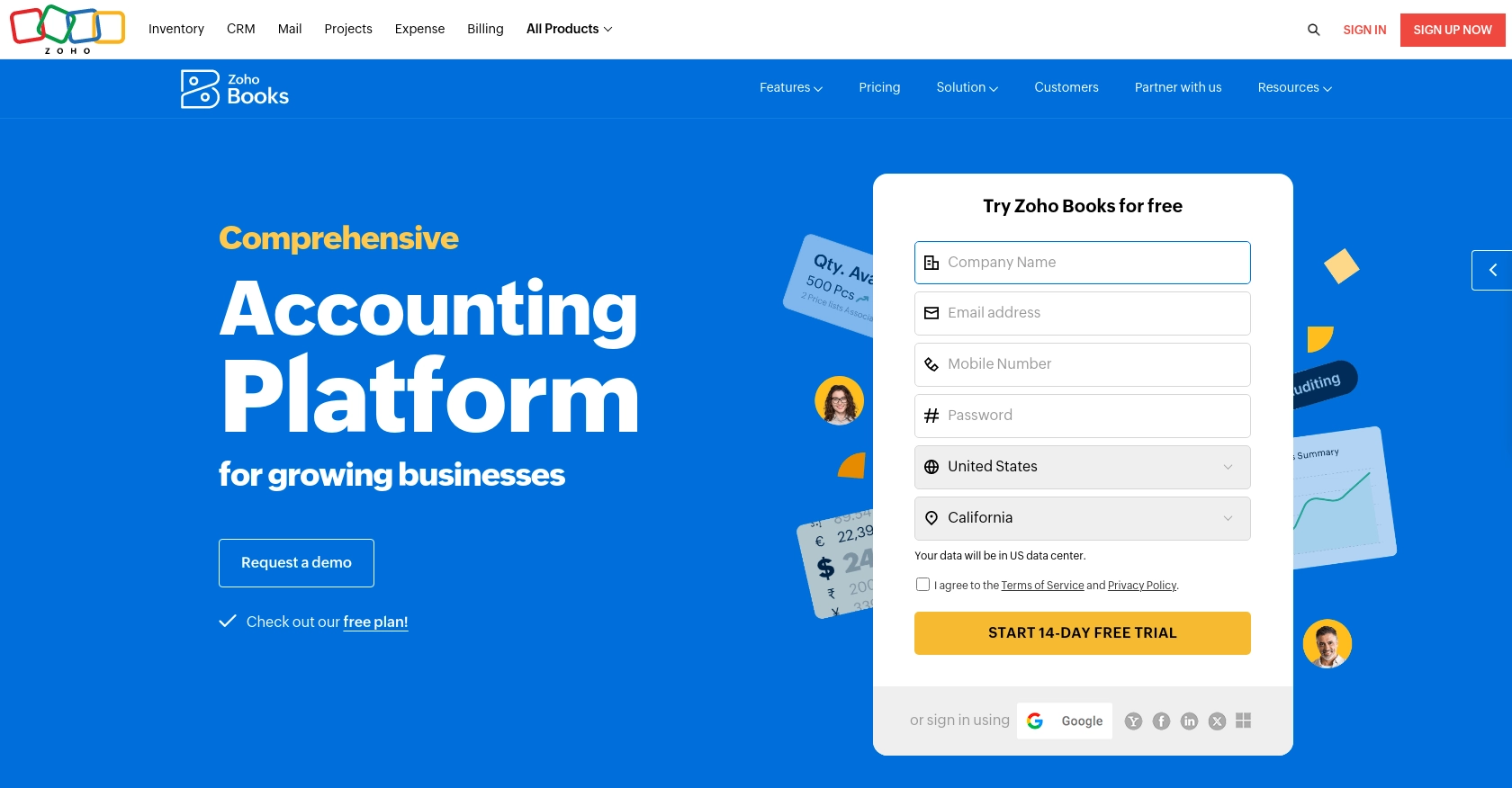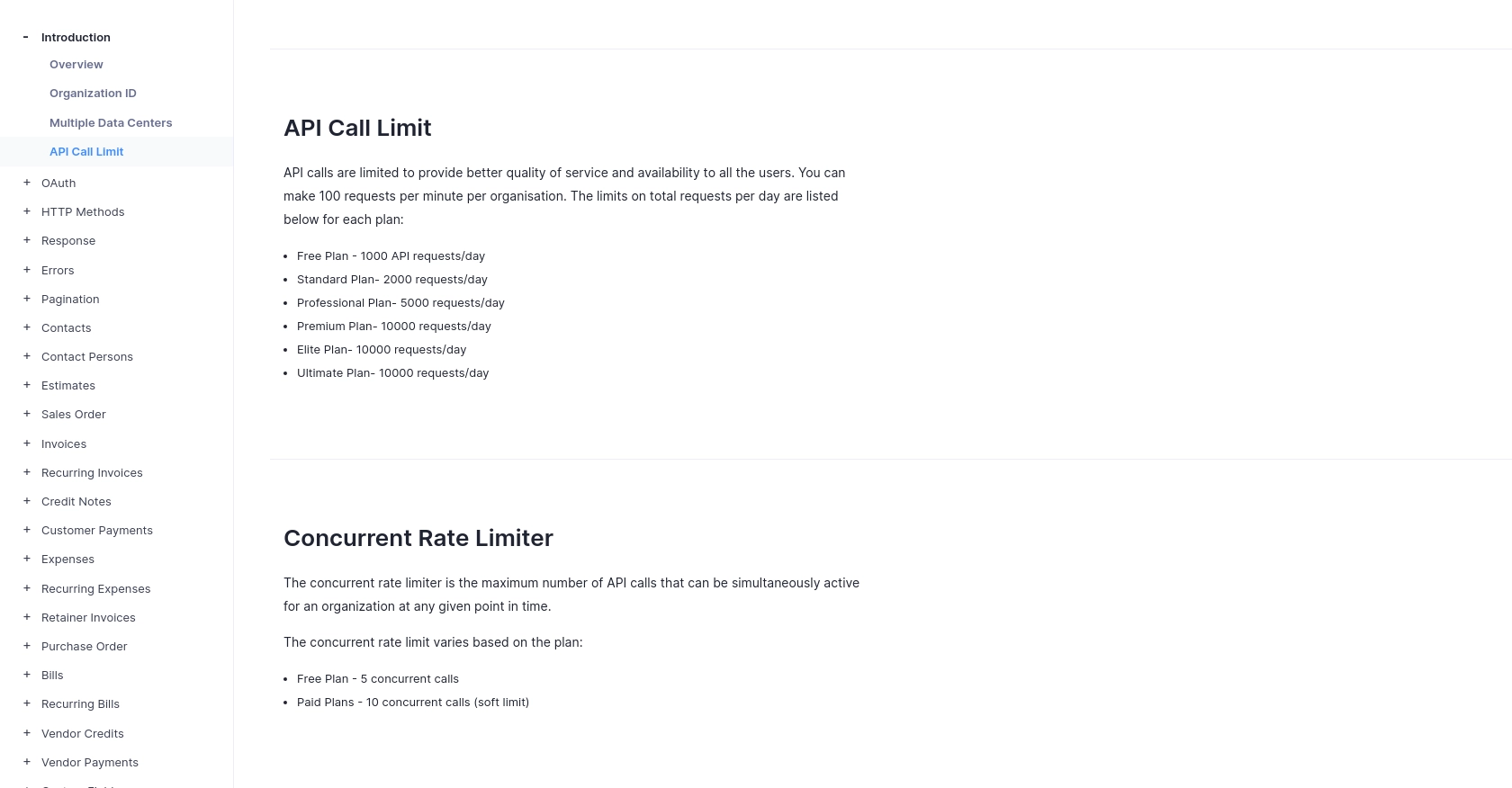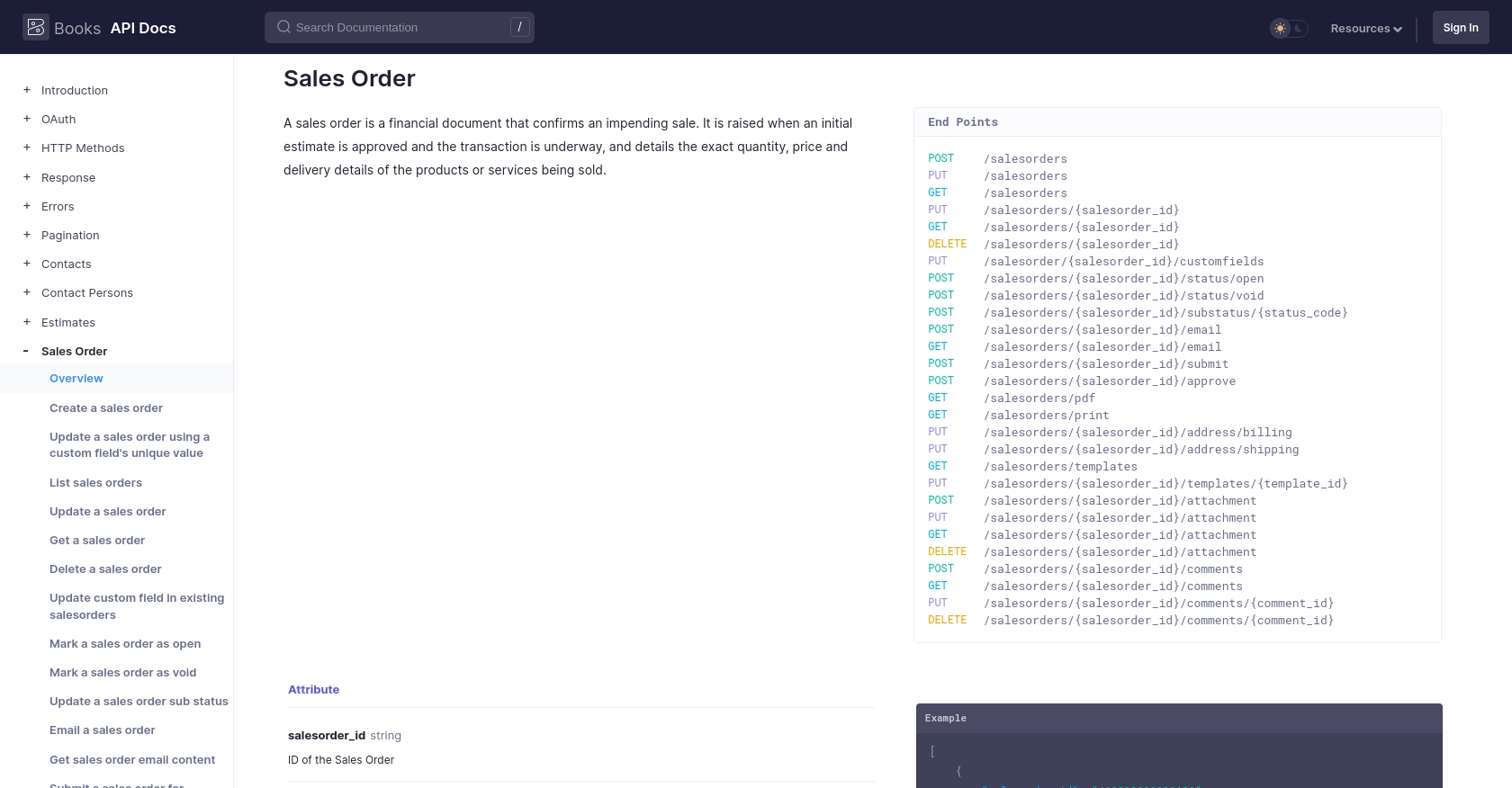Using the Zoho Books API to Get Sales Orders (with Python examples)

Introduction to Zoho Books API Integration
Zoho Books is a comprehensive cloud-based accounting software designed to manage your finances, automate business workflows, and help you work collectively across departments. It offers a wide range of features including invoicing, expense tracking, and inventory management, making it a preferred choice for businesses of all sizes.
Integrating with the Zoho Books API allows developers to automate and streamline various accounting processes. For example, accessing sales orders through the API can enable developers to efficiently manage and analyze sales data, automate order processing, and integrate with other business systems for a seamless workflow.
In this article, we will explore how to interact with the Zoho Books API using Python to retrieve sales orders. This integration can be particularly useful for businesses looking to enhance their sales management processes by leveraging real-time data and insights.
Setting Up Your Zoho Books Test/Sandbox Account for API Integration
Before you can begin interacting with the Zoho Books API, you'll need to set up a test or sandbox account. This will allow you to safely experiment with API calls without affecting your live data. Zoho Books offers a free trial that you can use for this purpose.
Creating a Zoho Books Account
To get started, visit the Zoho Books website and sign up for a free trial account. Follow the on-screen instructions to complete the registration process. Once your account is set up, you will have access to the Zoho Books dashboard.
Setting Up OAuth for Zoho Books API Access
The Zoho Books API uses OAuth 2.0 for authentication. Follow these steps to create an app and obtain the necessary credentials:
- Go to the Zoho Developer Console.
- Click on "Add Client ID" to register a new application.
- Fill in the required details, such as the client name, domain, and redirect URI.
- Upon successful registration, you will receive a Client ID and Client Secret. Keep these credentials secure as they are essential for API access.
Generating OAuth Tokens for Zoho Books API
With your Client ID and Client Secret, you can now generate OAuth tokens:
- Redirect users to the following authorization URL to obtain a grant token:
- After user consent, Zoho will redirect to your specified URI with a code parameter.
- Exchange this code for an access token by making a POST request:
- Store the access token and refresh token securely. The access token is used for API calls, while the refresh token is used to obtain a new access token when the current one expires.
https://accounts.zoho.com/oauth/v2/auth?scope=ZohoBooks.salesorders.READ&client_id=YOUR_CLIENT_ID&response_type=code&redirect_uri=YOUR_REDIRECT_URI&access_type=offlinehttps://accounts.zoho.com/oauth/v2/token?code=YOUR_CODE&client_id=YOUR_CLIENT_ID&client_secret=YOUR_CLIENT_SECRET&redirect_uri=YOUR_REDIRECT_URI&grant_type=authorization_codeFor more detailed information on OAuth setup, refer to the Zoho Books OAuth documentation.

sbb-itb-96038d7
Making API Calls to Retrieve Sales Orders from Zoho Books Using Python
To interact with the Zoho Books API and retrieve sales orders, you'll need to use Python. This section will guide you through the process of setting up your environment, making the API call, and handling the response.
Setting Up Your Python Environment for Zoho Books API Integration
Before making API calls, ensure you have Python installed on your machine. This tutorial uses Python 3.11.1. Additionally, you'll need the requests library to handle HTTP requests.
- Install Python 3.11.1 if you haven't already.
- Install the
requestslibrary using pip:
pip install requestsExample Code to Retrieve Sales Orders from Zoho Books
Once your environment is set up, you can proceed to write the Python code to make the API call. The following example demonstrates how to retrieve sales orders from Zoho Books:
import requests
# Define the API endpoint and headers
endpoint = "https://www.zohoapis.com/books/v3/salesorders"
headers = {
"Authorization": "Zoho-oauthtoken YOUR_ACCESS_TOKEN",
"Content-Type": "application/json"
}
# Define the parameters, including the organization ID
params = {
"organization_id": "YOUR_ORGANIZATION_ID"
}
# Make the GET request to the Zoho Books API
response = requests.get(endpoint, headers=headers, params=params)
# Check if the request was successful
if response.status_code == 200:
sales_orders = response.json()
print("Sales Orders Retrieved Successfully:")
for order in sales_orders.get("salesorders", []):
print(f"Sales Order ID: {order['salesorder_id']}, Customer Name: {order['customer_name']}")
else:
print(f"Failed to retrieve sales orders. Status Code: {response.status_code}, Error: {response.text}")
Replace YOUR_ACCESS_TOKEN and YOUR_ORGANIZATION_ID with your actual access token and organization ID.
Verifying the API Call and Handling Errors
After running the code, verify that the sales orders are retrieved successfully by checking the output. If the request fails, the error message will provide details. Common HTTP status codes include:
- 200 OK: The request was successful.
- 400 Bad Request: The request was malformed.
- 401 Unauthorized: Invalid authentication token.
- 429 Rate Limit Exceeded: Too many requests in a given time frame.
For more information on error codes, refer to the Zoho Books Error Documentation.
Handling Rate Limits and Best Practices
Zoho Books imposes rate limits on API calls. You can make up to 100 requests per minute per organization. To handle rate limits effectively:
- Implement retry logic with exponential backoff for rate-limited requests.
- Monitor your API usage to avoid exceeding limits.
For detailed rate limit information, visit the Zoho Books API Call Limit Documentation.

Conclusion and Best Practices for Zoho Books API Integration
Integrating with the Zoho Books API to retrieve sales orders using Python can significantly enhance your business's sales management capabilities. By automating the retrieval and analysis of sales data, you can streamline order processing and gain valuable insights into your sales operations.
Best Practices for Secure and Efficient Zoho Books API Usage
- Securely Store Credentials: Always store your OAuth tokens and client credentials securely. Avoid hardcoding them in your source code and consider using environment variables or secure vaults.
- Implement Error Handling: Use robust error handling to manage API call failures gracefully. This includes handling HTTP status codes and implementing retry logic for transient errors.
- Monitor API Usage: Keep track of your API usage to ensure you stay within the rate limits. Implement logging to monitor the frequency and success of your API calls.
- Optimize Data Handling: When retrieving large datasets, consider using pagination to manage data efficiently and reduce the load on your application.
Leveraging Endgrate for Seamless Zoho Books Integrations
While integrating with the Zoho Books API can be powerful, it may also require significant development effort. Endgrate offers a streamlined solution for managing integrations, allowing you to focus on your core product. With Endgrate, you can build once for each use case and leverage a unified API endpoint to connect with multiple platforms, including Zoho Books.
Explore how Endgrate can simplify your integration processes by visiting Endgrate's website. Save time and resources while providing an intuitive integration experience for your customers.
Read More
- https://endgrate.com/provider/zohobooks
- https://www.zoho.com/books/api/v3/introduction/#api-call-limit
- https://www.zoho.com/books/api/v3/oauth/#overview
- https://www.zoho.com/books/api/v3/errors/#overview
- https://www.zoho.com/books/api/v3/pagination/#overview
- https://www.zoho.com/books/api/v3/sales-order/#overview
Ready to get started?
